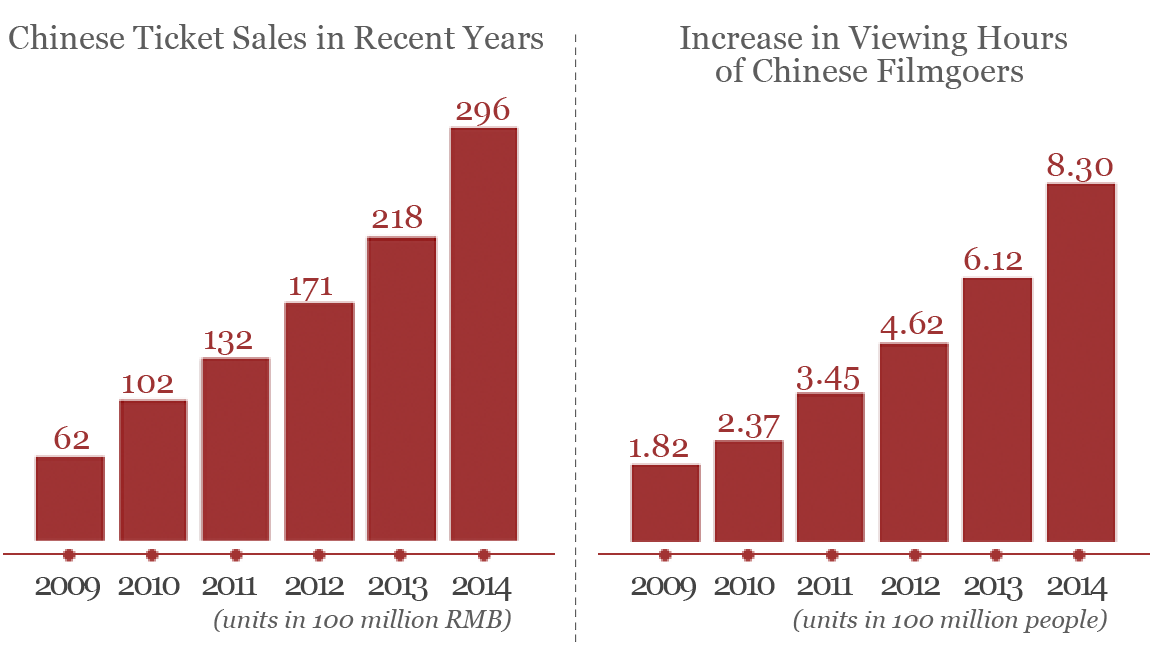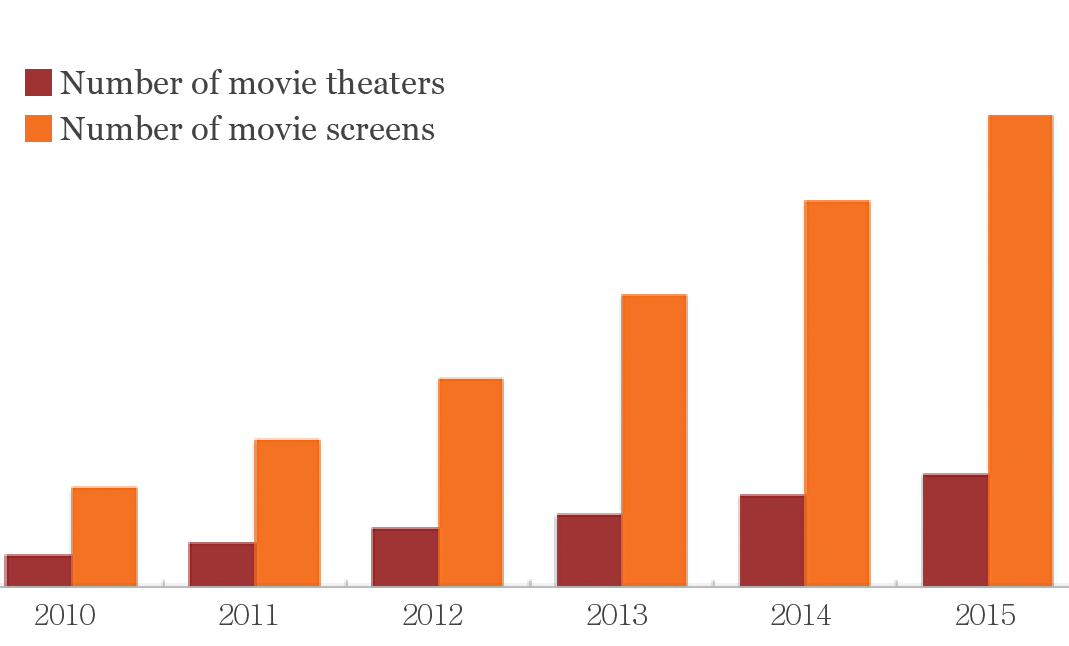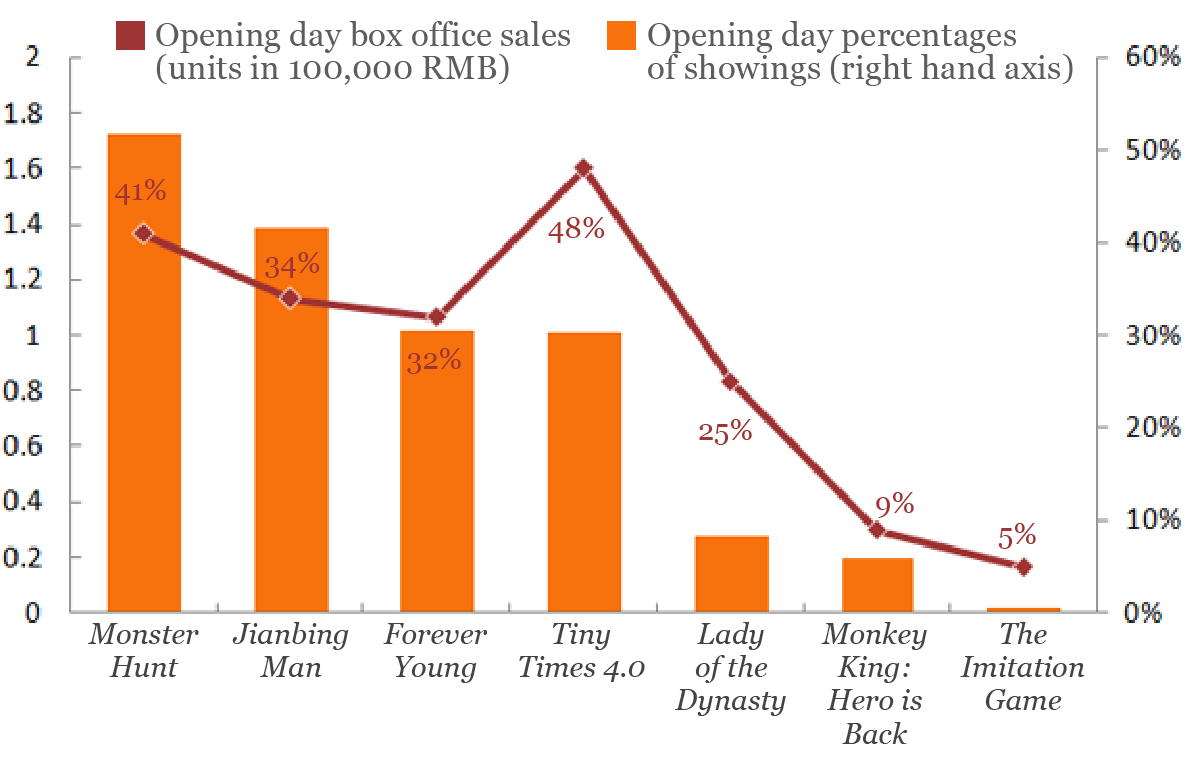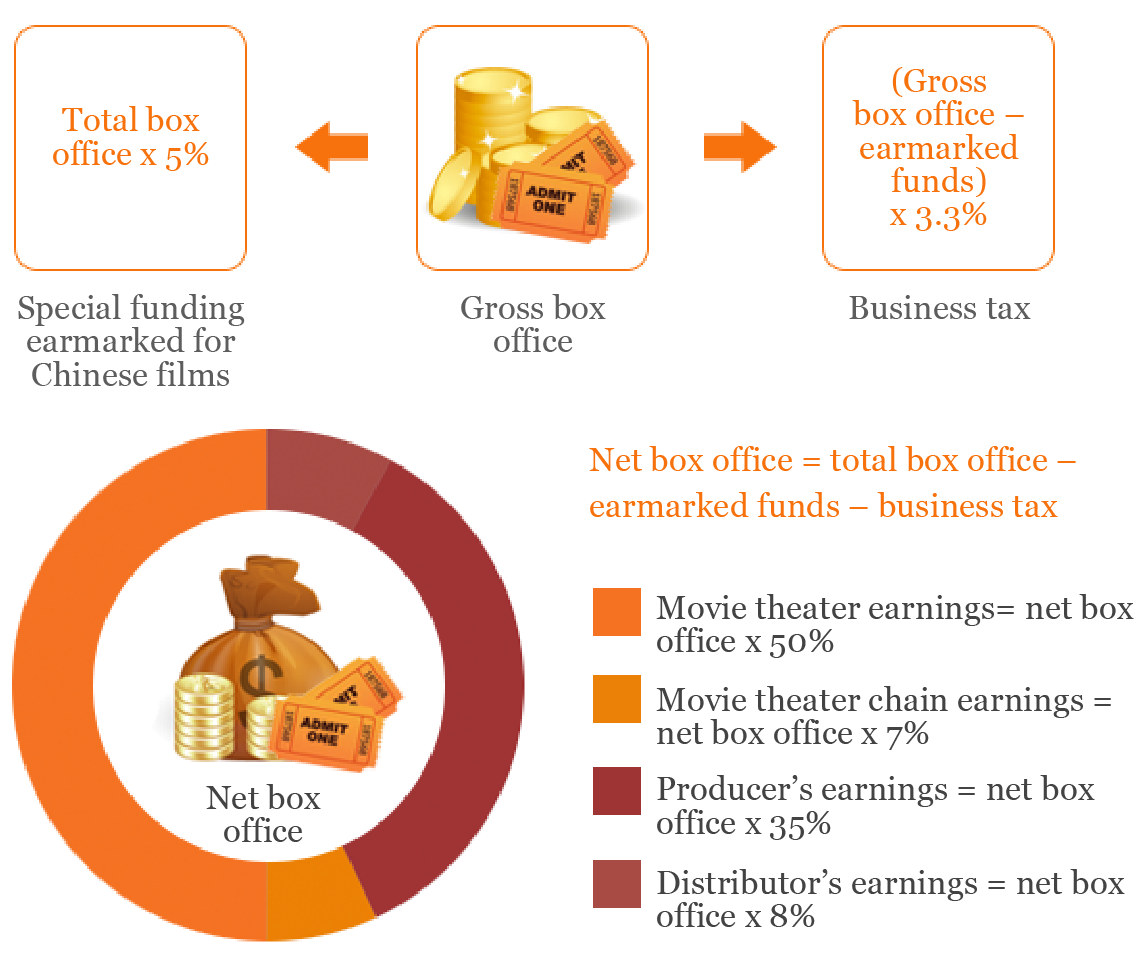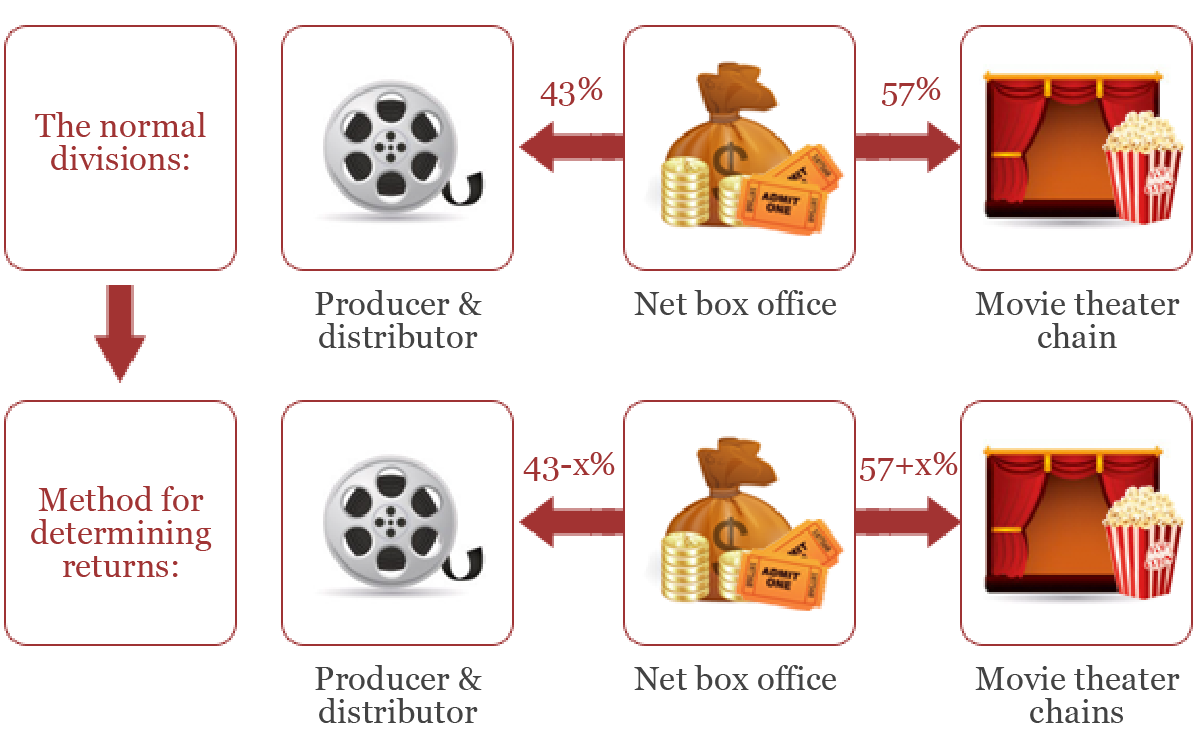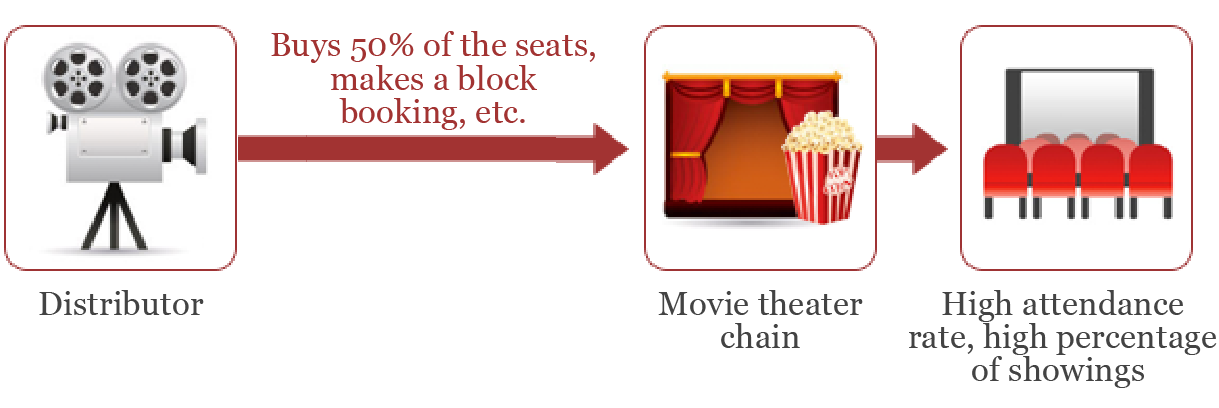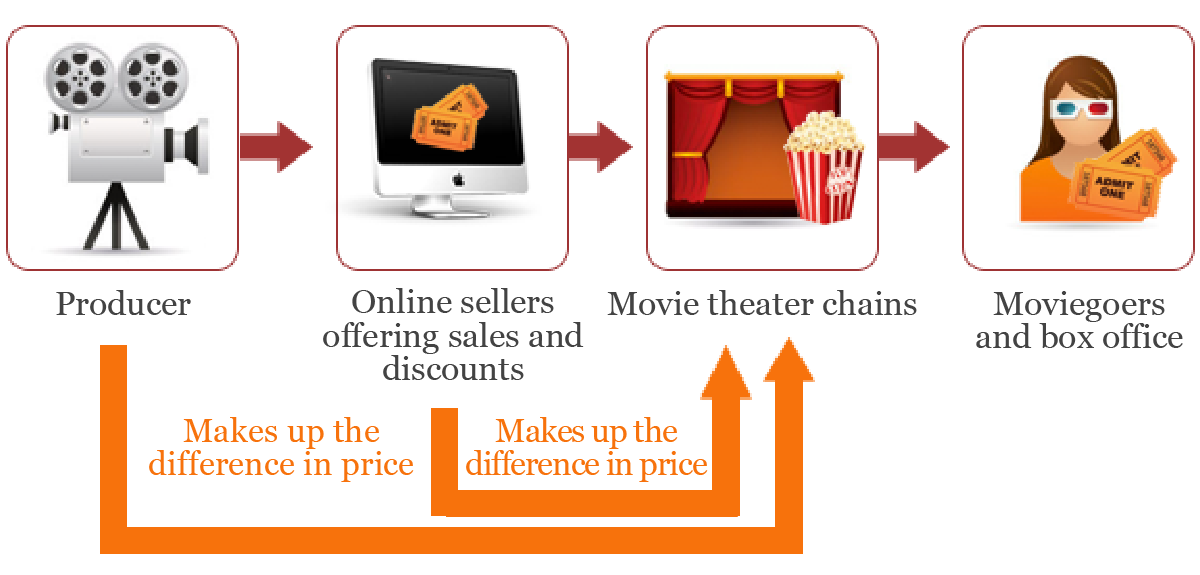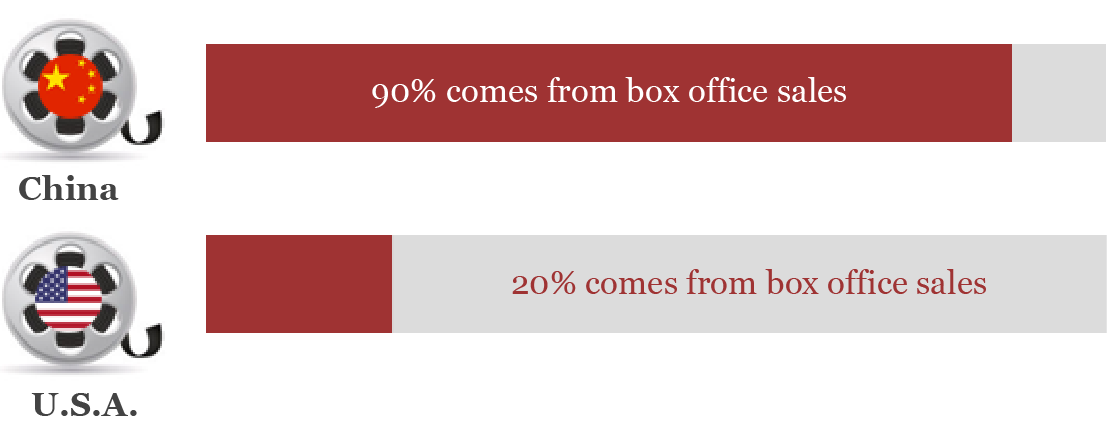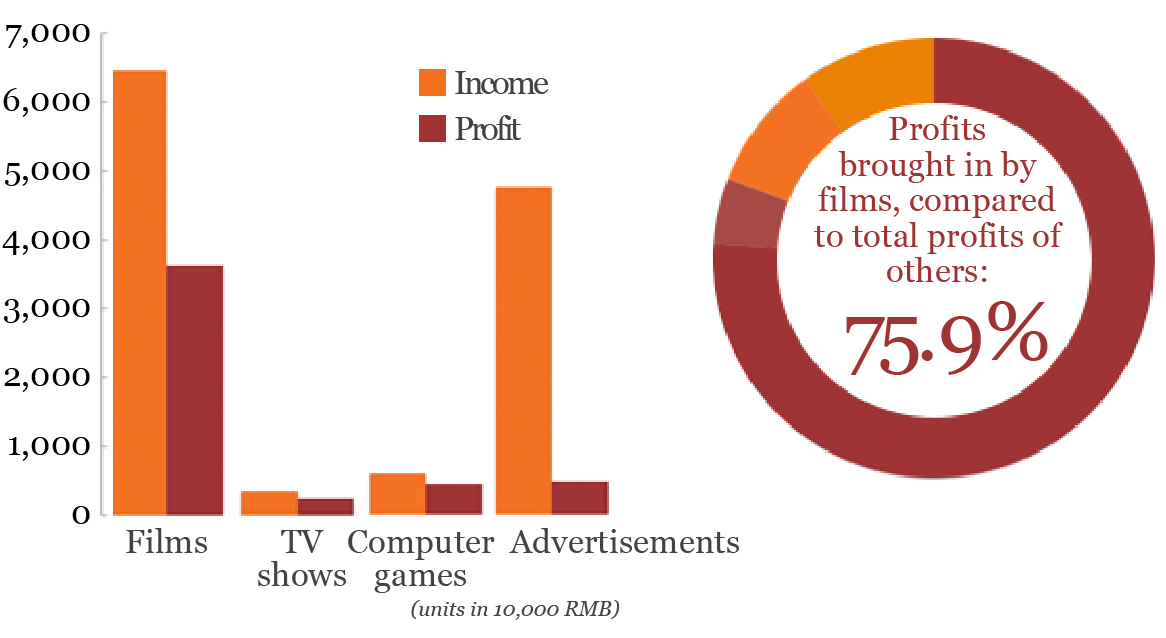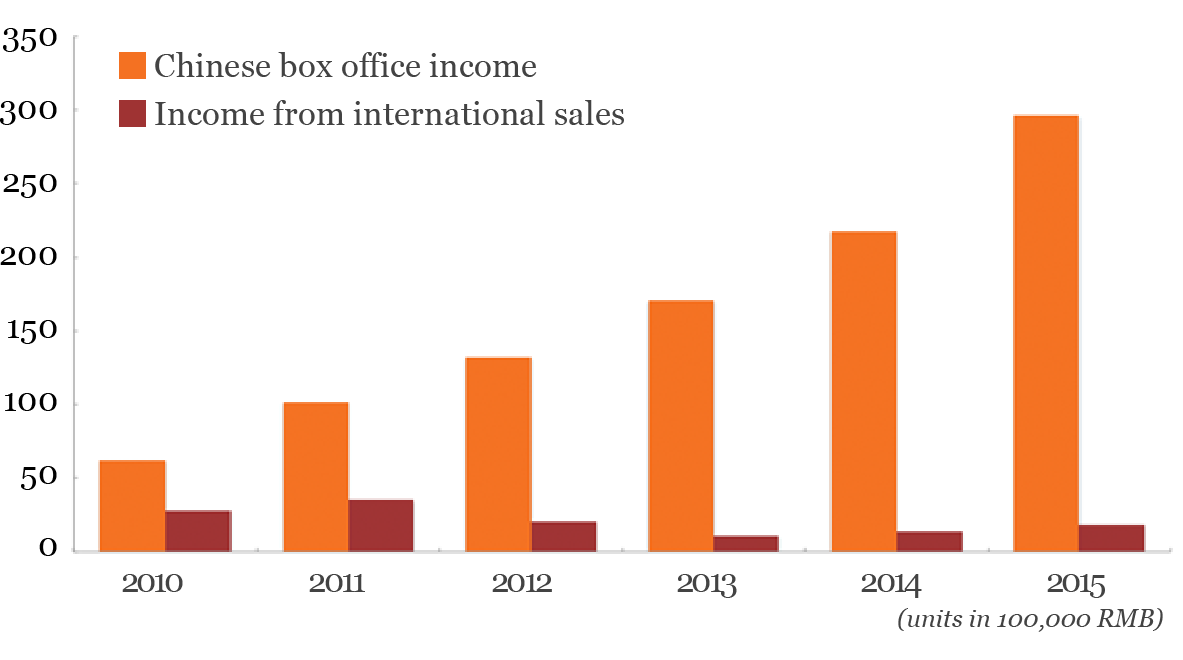In 2014, Chinese annual box office earnings exceeded 29 billion RMB. As of July of this year, box office sales had reached 25.9 billion. Chinese films keep smashing box office records, and surpassing 100 million in sales has become a bare minimum.
Behind the myth of steadily increasing annual box office sales is a gamut of hidden rules.
Here is the normal process for the distribution of films:
When filmmakers present a film, box office sales are determined by how many tickets are bought by moviegoers at the theaters.
Most important is how many showings movie theaters schedule, since the higher a film’s percentage of showings per day, the more times the movie will be seen and the higher the box office receipts will be.
More Showings Means More Box Office Sales
By 2014, there were 5,813 movie theaters in China, with a total of 24,317 movie screens.
Numbers of Chinese Movie Theaters and Movie Screens in Recent Years
Normal business hours of a movie theater are from 10 a.m. to midnight (not including midnight screenings and other special events). Assuming each film runs for an average of 2 hours, and deducting 15-20 minutes between each showing:
Normally, if the percentage of showings per day for a movie rises above 30%, the box office sales will be considerable.
Summer Season Opening Day Percentage of Showings and Box Office Sales
These highly disparate percentages of showings result in an enormous difference in box office earnings. And box office earnings affect whether the producer and distributor of a film will receive international attention, so both sides will try anything to raise the percentage of showings.
How Does a Movie Manage to Get a High Percentage of Showings?
1. Returns for “co-productions” lead to a high percentage of showings.
First, how do Chinese films share box office earnings?
Returns are 2-10% taken out of the producer and distributor’s combined 43% and given back to the movie theater chain. With this incentive, chains naturally will offer more showings, guaranteeing that those movies have an advantage in the fierce box office competition.
So the rate of the return will change according to box office sales. However, it isn’t as simple as the higher a percentage of showings, the better. Attendance rates also have to be taken into account.
2. Direct “cooperation” with movie theaters to buy out showings results in high attendance rates and helps maintain a high percentage of showings.
Distributors don’t need to buy all of the tickets for a showing. A movie theater can use normal methods to sell a portion of the tickets. Generally a 50% attendance rate at a screening will guarantee a profit for the theater.
But it isn’t enough for the producer to pay large “bribes” to movie theater chains. Even more important is to offer discounted tickets to attract ordinary moviegoers.
Collaborating with Online Sellers to Sell Discounted Tickets to Attract More Viewers
Hot Sales by Online Sellers
Following the rise of online platforms, many producers have chosen to work with online sellers to sell discounted tickets to viewers.
This happens as a result:
This new way of selling tickets over the Internet means that each movie faces a price war for box office sales, and huge price differences lead to heated purchases, more ordinary moviegoers going to the movies, and an increase in box office sales.
But is this unending outlay of net costs really worth it?
Chinese films still make a profit mainly by relying on box office sales.
Pursuing Box Office Sales as the Only Way to Make a Profit
Chinese films still make a profit mainly by relying on box office sales.
Videos contribute more than half of a film company’s total income, and taking out net costs, they are the best source of annual profits. Box office sales of course guarantee overall profit.
2014 Income and Profit from Different Divisions of One Media Company
High Box Office Sales Lead to a Surge in Stock Prices
When high box office sales lead to higher earnings, stocks in the media company will see a spike.
Stock Prices of Companies Involved with Summer Season Releases
| Date of first showing | Name of film | Publicly traded manufacturer and distributor | Change in company stock price after the first showing |
| July 17 | Jianbing Man | Sohu (American stock exchange) Wanda Cinemas—Wanda Group Enlight Pictures—New Classics Media Corp. | +6.5% +26.3% +18.7% |
| July 10 | Monkey King: Hero is Back | Enlight Pictures | +18.7% |
| July 10 | Forever Young | Huayi Brothers Media Corp. Guangdong ALPHA Animation & Culture Co., LTD—ALPHA Film Corp. | Trade suspended Trade suspended |
| July 9 | GG Bond: Ultimate Battle | Shanghai Xinhua Media Co.—Toonmax Media Guangdong ALPHA Animation & Culture Co., LTD—Jiajia Cartoons | Trade suspended |
| July 9 | Tiny Times 4.0 | Letv—Leshi Internet Information & Technology Kunlun Tech Co., LTD.—Heli Chenguang Media Co., LTD. Songcheng Performing Arts Development Co.—Dasheng International Media Co. | -4.4% Trade suspended during the film run -2.4% |
Clearly, the successful run of a film can have a certain degree of influence on the stocks of the companies behind it. When these films occupied a top position at the box office, the publicly traded companies behind them saw a rise in their stock prices.
So, with such high box office sales in China, are international box office sales high as well?
Outside of China, Chinese films are not very competitive. For all of 2014, Chinese movies earned only 1.87 billion RMB in international sales.
Chinese Box Office Income vs. International Sales Income
This is because, whether in terms of the quality or in terms of global distribution mechanisms, Chinese films still fall far short of international films.
Conclusion:
The hidden rules behind the Chinese film industry make it impossible for films to receive equal treatment in China. Movie theaters aren’t run as charities. Their only goal is to make a profit. During the unofficial “domestic film protection month” in particular, international films will disappear from screens, leading to the misleading phenomenon of gloomy box office sales for Oscar-nominated films.
Translated by Eleanor Goodman.




